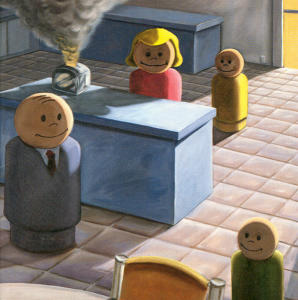Emo 24 Bit Vinyl Packseeders: 4
leechers: 6
Emo 24 Bit Vinyl Pack (Size: 7.76 GB)
Description Emo 24 Bit Vinyl Pack Genre: Pop/Rock Styles: Alternative, Emo Source: vinyl Codec: FLAC Bit Rate: ~ 2,900 kbps Bit Depth: 24 Sampling Rate: 96,000 Hz Albums 1985 Rites of Spring - Rites of Spring 1994 Sunny Day Real Estate - Diary 1999 American Football - American Football 1999 Jimmy Eat World - Clarity (live album) 2000 Cursive - Domestica 2000 The Appleseed Cast - Mare Vitalis 2000 Dashboard Confessional - The Swiss Army Romance 2003 Elliott - Song in the Air 2003 Brand New - Deja Entendu Split 7" 1991 Jawbreaker / Jawbox split 7 1997 Mineral / Jimmy Eat World / Sense Field split Originally an arty outgrowth of hardcore punk, emo became an important force in underground rock by the late '90s, appealing to modern-day punks and indie-rockers alike. Some emo leans toward the progressive side, full of complex guitar work, unorthodox song structures, arty noise, and extreme dynamic shifts; some emo is much closer to punk-pop, though it's a bit more intricate. Emo lyrics are deeply personal, usually either free-associative poetry or intimate confessionals. Though it's far less macho, emo is a direct descendant of hardcore's preoccupations with authenticity and anti-commercialism; it grew out of the conviction that commercially oriented music was too artificial and calculated to express any genuine emotion. Because the emo ideal is authentic, deeply felt emotion that defies rational analysis, the style can be prone to excess in its quest for ever-bigger peaks and releases. But at its best, emo has a sweeping power that manages to be visceral, challenging, and intimate all at once. The groundwork for emo was laid by Hüsker Dü's 1984 landmark Zen Arcade, which made it possible for hardcore bands to tackle more personal subject matter and write more tuneful and technically demanding songs. Emo emerged in Washington, D.C. not long after, amidst the remnants of the hardcore scene that had produced Minor Threat and Bad Brains. The term "emo" (sometimes lengthened to "emocore") was initially used to describe hardcore bands who favored expressive vocals over the typical barking rants; the first true emo band was Rites of Spring, followed by ex-Minor Threat singer Ian MacKaye's short-lived Embrace. MacKaye's Dischord label became the center for D.C.'s growing emo scene, releasing work by Rites of Spring, Dag Nasty, Nation of Ulysses, and MacKaye's collaboration with members of Rites of Spring, Fugazi. Fugazi became the definitive early emo band, crossing over to alternative rock listeners and getting press for their uncompromisingly anti-commercial attitudes. Aside from the Dischord stable, most early emo was deeply underground, recorded by extremely short-lived bands and released on vinyl in small quantities by small labels; some vocalists literally wept onstage during song climaxes, earning derision from hardcore purists. Fugazi notwithstanding, emo didn't really break out of obscurity until the mid-'90s emergence of Sunny Day Real Estate, whose early work defined the style in the minds of many. Tempering Fugazi's gnarled guitar webs with Seattle grunge, straight-up prog-rock, and crooned vocals, SDRE launched a thousand imitators who connected with their dramatic melodies and introspective mysticism. Some of this new generation connected equally with the wry, geeky introspection and catchy punk-pop of Weezer's Pinkerton album. While several artists continued to build on Fugazi's innovations (including Quicksand and Drive Like Jehu), most '90s emo bands borrowed from some combination of Fugazi, Sunny Day Real Estate, and Weezer. Groups like the Promise Ring, the Get Up Kids, Braid, Texas Is the Reason, Jimmy Eat World, Joan of Arc, and Jets to Brazil earned substantial followings in the indie-rock world, making emo one of the more popular underground rock styles at the turn of the millennium. Related Torrents
Sharing Widget |
All Comments